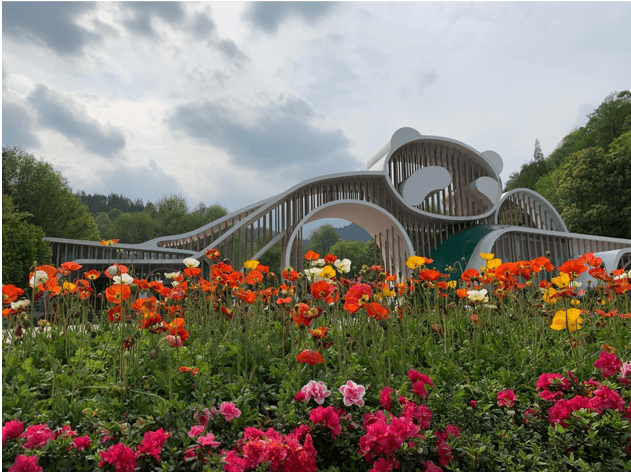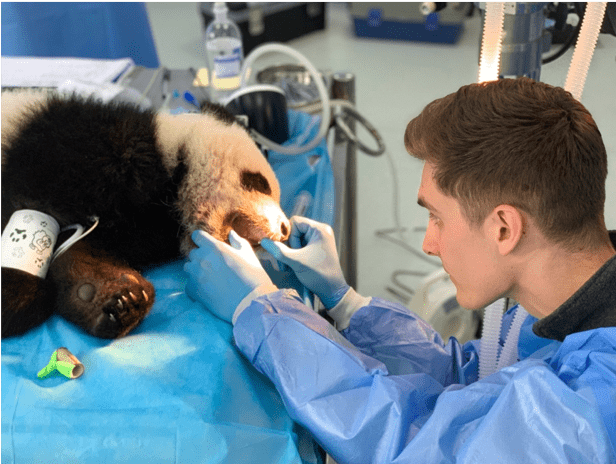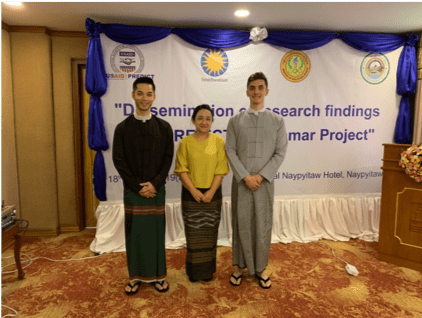Of Pandas, Partnership, and Purpose
By Dr. Zachary Dvornicky-Raymond, Cornell University College of Veterinary Medicine '19
Two years ago, nearly to the day, I sat across from Dr. Marc Valitutto in a conference room at the Smithsonian Conservation Biology Institute in Front Royal, Virginia. Marc and I spoke for over an hour about my lifelong dream to work in conservation, and how that has manifested itself as a goal to become a field veterinarian. At one point, Marc folded his hands and looked me in the eye.
“So you want to be a field vet, huh? You want to do the work I do? It’s not easy, but if it’s what you want, I’ll teach you everything I can…”
In March, I boarded a plane at JFK International Airport with a course set for Chengdu, China. Over a year of intense planning, contract negotiation, grant writing, and late-night phone calls had lead to the first partnership between the Smithsonian Conservation Biology Institute (SCBI) and the Chengdu Research Base for Giant Panda Breeding (CPB). Through a similar (albeit less intense) series of events, I secured an opportunity to join Marc in the field. Made possible through funding granted to me by the Expanding Horizons program at Cornell University, I became the first student to join the SCBI-Chengdu Panda Base partnership. As a representative of Cornell and the Smithsonian, I had an invaluable opportunity before me to further the mission of the partnership, help build relationships between institutions, and above all, finally get to experience veterinary medicine in the field first-hand.
What awaited me when I got off that plane completely shattered my expectations.
The partnership between the SCBI’s Global Health Program and the CPB is primarily aimed at building veterinary capacity at CPB, with the goal of improving the clinical and research capabilities of the teams there. Doing so will benefit giant panda conservation in many ways, including bettering health management for captive pandas at the base, enhancing research of giant panda health and disease, and improving our understanding of giant pandas in the wild. It is not an overstatement to say that this partnership is unprecedented. For me, being a part of this work is everything I had ever hoped for.
Our days were split between clinical medicine with the giant and red pandas, developing protocols for clinical techniques and disease prevention, research, and teaching opportunities. Marc and I worked closely with the veterinary and research teams at CPB to identify areas of need, and then develop ways to meet those needs. For me, it was an opportunity to utilize my 8 years of combined basic science and veterinary training to the fullest. We organized and conducted training sessions on everything from electrophysiology of the heart to proper darting technique and safety.
Looking back, I am amazed by how much we were able to accomplish over those two months. I should note, however, that even as I was teaching, I was also learning. I learned an incredible amount from the veterinary staff at CPB, and even more from Marc himself. Each day was filled with countless moments where I would transition between teacher and student. It was such a wonderful feeling to be able to collaborate and learn from one-another in such an open, free-flowing way.
At the end of my time in China, Marc and I visited reintroduction sites for giant pandas and met with the leaders of the reintroduction program to provide a veterinary perspective to their ongoing work. We also travelled to a remote research and breeding facility for Chinese monals, a beautiful, yet endangered bird endemic to China. This facility is tucked deep within the Sichuan mountains, the perfect place for a nature lover. These trips gave me an opportunity to see the beauty of China, and to take a moment to reflect on why we work as hard as we do: it is all for the conservation of this beautiful world to better the lives of the people and animals that inhabit it.
Between the fulfilling work, the beautiful nature, the wonderful people, the rich culture, and the incredible food, I cannot speak highly enough about my experience in China. The lessons learned and memories made during that journey will help guide and enrich me throughout my life. I felt a deep sense of belonging and purpose throughout my experience, and am fully invested in committing myself to this path.
I feel incredibly fortunate to have worked with the people and animals that I did, and to have such great mentorship along the way. I am grateful for the opportunity given to me by the Expanding Horizons program, and for the guidance I have received from my mentors at Cornell. I would like to especially thank Marc for taking me under his wing; for being such an excellent mentor and an amazing friend. I have merely scratched the surface of what it means to be a field veterinarian and a conservationist. Fortunately, I have a whole life of exploration ahead of me.




